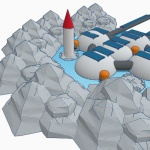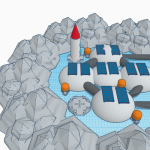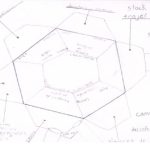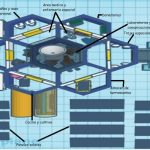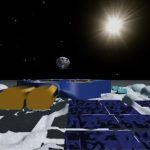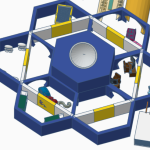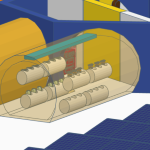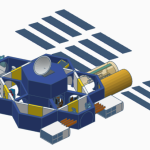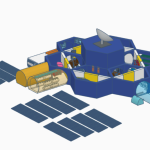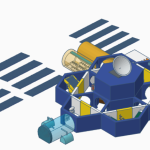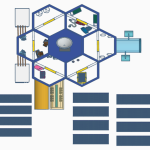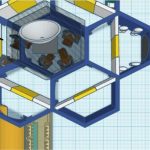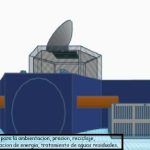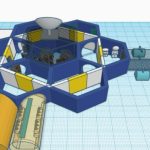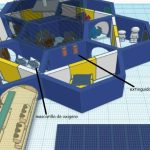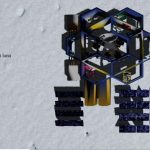Resource Extraction Rover by The Space Farers
TASIS Portugal Sintra-Lisboa Portugal 13 years old, 14 years old 3 / 2 English Moon
External link for Tinkercad 3D design
Project description
We found out that Lunar dirt (regolith), contains a lot of oxygen and metal compounds, such as: Silicon Oxide, Aluminium Oxide, Calcium Oxide, Magnesium Oxide, Titanium Oxide, Iron, Sodium, Potassium, Chromium, Zirconium.
So we decided to make a rover that collects regolith and separates the elements from each other. Our first idea was to use electrolysis to separate the different elements, but then realised that electrolysis had to be done in a liquid, so we had to find a new solution.
The Rover drives along the equator of the moon at roughly 10.5 miles per hour and is powered by solar panels. This is just enough to be in sunlight at all times. This means it can run constantly and not have to stop during the night. As the rover drives along, it scoops up lunar dirt and brings it to a heating chamber, where it then shoots high power lasers at it. This starts to heat up the regolith, and since each of the different elements have a different melting point, one by one they will turn into a gas. Every time one element turns into a gas, a valve will open and suck it into a separate chamber, and then seal again. There the gas cools down and solidifies back into a pure element. The process is repeated until there is nothing left in the heating chamber and then the process will start all over again with a different batch of lunar dirt. There will be a drop off point at a certain spot on the Moon where it can empty its storage.
#3D Design
Other Projects
Bioinspiración de Habitat con base en la estructura modular de los panales de abejas
Ciudad de México – Mexico










